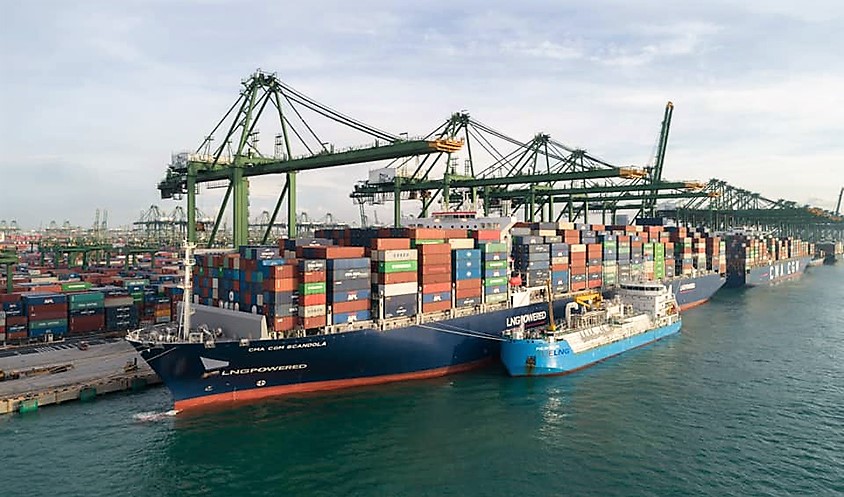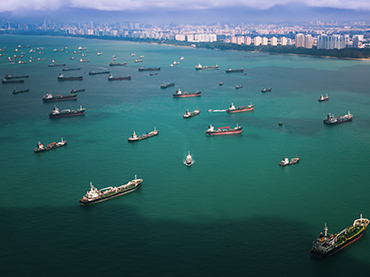
The imperative to grow our port, and develop our International Maritime Centre, must be accompanied by efforts to protect the marine environment and tackle climate change.
The Maritime and Port Authority of Singapore (MPA) is moving decisively to develop various net-zero fuel pathways in the Port of Singapore. MPA targets for Singapore’s domestic harbour craft sector to achieve net-zero emissions by 2050, and will require all new harbour craft operating in our port waters to be fully electric, be capable of using B100 biofuels, or be compatible with net-zero fuels from 2030. As a major bunkering hub, Singapore is also building up ammonia, hydrogen and methanol value-chains to safely offer a range of fuel solutions for the international shipping industry.
In addition, both port terminal operators, PSA Corporation Limited and Jurong Port Pte Ltd, aim to collectively achieve at least 60% reduction of total emissions from port operations by 2030 as compared to 2005 levels, and net-zero emissions by 2050. Tuas Port, when fully operational in the 2040s, will consolidate all container terminal activities in Singapore at a single location. By 2050, Tuas Port container handling operations will be powered by electricity, supplemented by low or zero-carbon energy sources . Solar panels will also be used to generate green electrons for the port terminals. MPA has also worked with volunteers from environmental interest groups to relocate coral colonies to St John’s and Sisters’ Islands, to protect them from the impact of Tuas Port development.
To support the green energy transition, in 2011, MPA launched a S$100 million Maritime Singapore Green Initiative (MSGI). In line with the strengthened global commitment to reduce greenhouse gas (GHG) emissions from ships, MPA refreshed the MSGI to encourage early adoption of zero and near-zero GHG emissions technologies and fuels. MPA has committed $50 million to support the refreshed MSGI.
The 2023 International Maritime Organization (IMO) GHG Strategy commits Member States to peak GHG emissions from international shipping as soon as possible and reach net-zero by or around 2050. As a responsible global hub port, Singapore plays an important role in catalysing the greening of international shipping, and we remain committed to providing zero and near-zero emission solutions to meet the future energy needs of the global shipping industry.
MPA worked with the IMO and other Member States to develop GHG reduction measures that will help the maritime sector meet the targets set out in the 2023 IMO Strategy on Reduction of GHG Emissions from Ships. The measures were approved by the IMO in April 2025. MPA has also ratified all major IMO Conventions relating to the prevention of pollution from ships.
In addition, Singapore has established six bilateral Green and Digital Shipping Corridors (GDSCs) with the (i) Port of Rotterdam, (ii) Port of Los Angeles and Port of Long Beach, (iii) Tianjin, (iv) Japan, (v) Australia, and (vi) Shandong, which aim to support the decarbonisation of the maritime industry and improve efficiencies through digitalisation and mobilising demand from the private sector.
Given the dynamic developments in the global maritime decarbonisation landscape, MPA constantly refines and reviews our strategies and initiatives to ensure alignment with our local and global net-zero targets. Periodic updates will continue to be provided to the industry at relevant fora.
